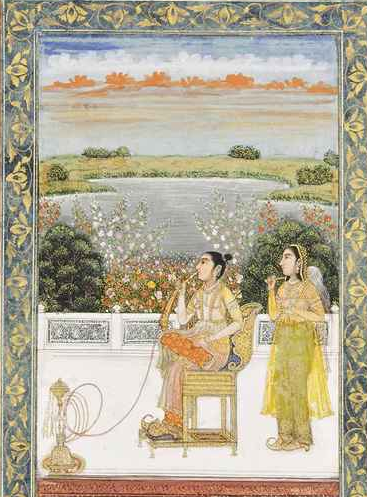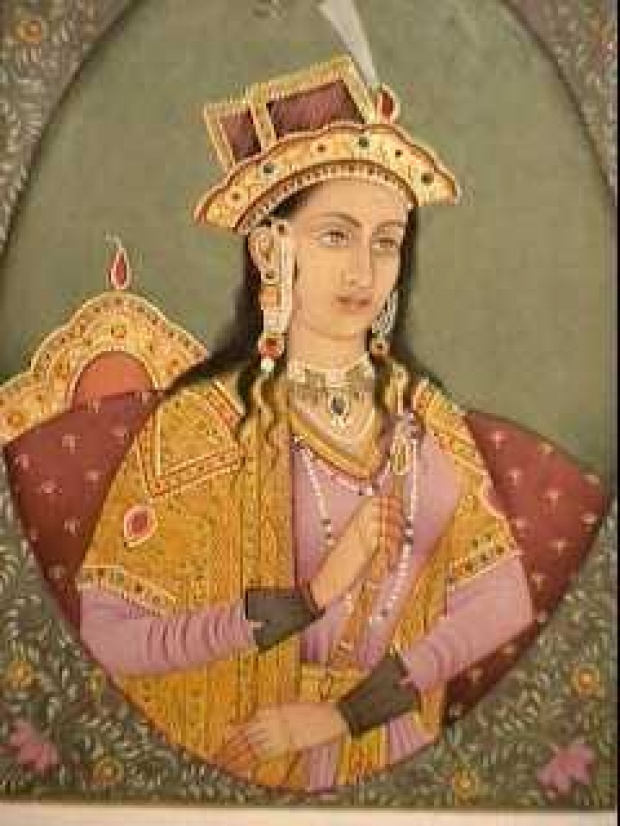
Mughal Emperor Humayun, who had a tendency for complacency and laziness, lost his hegemony to Sher Khan, later to become Sher Shah Sur in 1540, during the tenth year of his reign. As a result of this defeat, Humayun fled, first to Lahore and subsequently to Kabul, taking just his immediate family with him, and thus the Mughal throne of Delhi was lost under him. Humayun left with his entourage consisting of his pregnant wife, one female attendant, and a few honourable men. In Afghanistan and Persia, he spent fifteen years in exile.
An extraordinary document on Humayun’s life is recorded and compiled by his sister and Babur’s daughter Gulbadan Begum. But it was during Akbar’s time when she was asked to write a biography of Babur and Humayun. Gulbadan Begum seems to have been a well-educated, religious, and cultured woman of nobility. Her description makes it clear that she was a keen observer who was knowledgeable about the complexities of battle and the intrigues surrounding royal negotiations. Her memoir’s initial section focuses on Humayun’s rule following her father’s passing and his struggles following his defeat. She had not written anything about her father Babur because she was too young to remember him when he passed away. However, in her story, she incorporated certain anecdotes and tales she had heard about him from her people in the Mahal (harem). Gulbadan wrote her memoir Humayun Namah in Persian. Her compilation was a factual account consisting of what she remembered without embellishment. The original title of Humayun Namah was Ahwal Humayun Padshah Jamah Kardom Gulbadan Begum bint Babur Padshah amma Akbar Padshah.
According to her narrative, Gulbadan married Khizr Khwaja Khan, her second cousin and a Chagatai Mughal by blood, by the time she was seventeen. It is clear from her account that she moved back to Kabul to live with one of her half-brothers after Humayun was defeated in 1540 by Sher Khan Sur. Although later Humayun reclaimed his throne, she remained in Kabul instead until Akbar brought her back to Agra, two years after Humayun passed away tragically in an accident in 1556. In her memoirs, Gulbadan Begum recalls Humayun’s illness and how her father passed away soon after Humayun recovered. Additionally, Gulbadan Begum documents the personal life of the Emperor, and not only that she records the itinerant status of Mughal women in the early years of Humayun’s reign. As in the early years, Gulbadan herself had to move back and forth between Kabul and Delhi which further got arduous during Humayun’s exile. Another important aspect of Gulbadan Begum’s Humayun Namah is that it is a firsthand account of the 16th-century Mughal Harem. Her account especially focuses on Humayun’s tempestuous and intricate relationships with his wives and womenfolk. Not only that, her account gives comprehensive details on women in the Mughal Harem which the other contemporary writings fail to provide. Ira Mukhoty has interpreted that through Gulbadan Begum’s account people can get tantalising fragments that are never referred to in the men’s biographies. On the other hand, according to Ruby Lal, the princess’ account was markedly different from any of these contemporary writings. The second part of Gulbadan Begum’s memoir begins with Humayun’s reign where apart from other historical data on conquest and expeditions she also has explored the condition of Mughal women during wars who were lost. Thus, Gulbadan’s narrative encourages us to reexamine a number of presumptions that are frequently held about the Mughal era, both in its public and domestic domains.

The narrative walks us through the intricate web of relationships that the ladies of the nobility were a part of in the Harem. It highlights the public and political matters that had to be conducted both in the courts and at the Harem, and through all of this, it highlights the very different connotations attached to family, married life, and domestic concerns in this 16th-century world. One of the sections from Gulbadan Begum’s memoir discusses the time Humayun spent with the women of the family. In another description, she mentions the role of the Mughal Harem at the time while Humayun was challenging the Afghan ruler Sher Shah. Gulbadan Begum cites that during this period the Mughal throne was also facing threats from inside as the other brothers of Humayun were also demanding the throne. Giving details about this instance Gulbadan Begum further mentions that Humayun asked Khanzada Begum, his paternal aunt to travel to Qandahar to meet Kamran who was one among his brothers and a strong contender for the throne. It was Khanzada Begum who advised Mirza Kamran to regard Humayun as his superior and to remain obedient to him. As the event of Humayun’s death is missing from her account which abruptly ends 4 years before his death, historian Neria H.Hebber projects the account as an incomplete version of her writings.
To conclude we can say that though Humayun Namah by Gulbadan Begum gives intricate detail on Humayun and his period it receives scant attention in contemporary writing as an authentic source, particularly from those who wrote about Akbar’s reign. Historians interpret that perhaps it is because her memoir is more of a personal document than an incomplete one. However, the little-known story of Gulbadan Begum is a crucial historical record since it provides a glimpse into a woman’s perspective from within the Mughal harem and gives very personal details about the Emperor’s life which is not documented by other contemporary writers or historians.

Jikmik Molia
Jikmik Molia is a final year student of History at Sri Venkateswara College, Delhi University. Interested in exploring ancient Indian history and the history and culture of North East India, she aspires to pursue Archaeology at a near future.


amazing!!
Your place is valueble for me. Thanks!…
Simply desire to say your article is as surprising. The clarity in your put up is just cool and i can assume you are knowledgeable on this subject. Fine along with your permission allow me to grasp your RSS feed to stay up to date with approaching post. Thank you 1,000,000 and please keep up the enjoyable work.